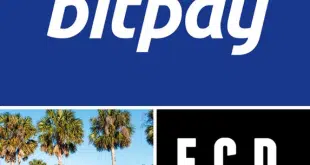The payments industry may have solved a vexing problem related to EMV chip cards and the Dodd-Frank Act’s Durbin Amendment, but whether that solution will smooth the way for EMV (Europay-MasterCard-Visa) deployment in the United States is less clear.
The EMV Migration Forum, an industry group that has been working on ways to make EMV compliant with Durbin’s mandate that merchants have a choice in debit-transaction routing, last week announced the group has settled on what it calls a “recommended path” that steers between and among at least three competing solutions.
No debit card, the announcement says, will be allowed to accommodate more than one solution, an approach that the group says simplifies card issuance as well as merchant acceptance. But rather than mandate any one solution, the recommendation leaves it up to issuers to decide which one to embed on any given card. MasterCard Inc. and Visa Inc. have both proposed solutions, and so has the Secure Remote Payment Council, whose debit-network members adopted technology from Discover Financial Services.
Each of the solutions presents a means of letting merchants and merchant processors identify networks supported by a given issuer and then route transactions to the preferred network. As a two-decades-old, proprietary standard deployed until now only outside the U.S., EMV does not normally allow for this routing choice. The so-called common AID solutions, or application identifiers, are expected to give EMV that ability for debit payments. In the EMV specification, the AID is a string of characters that identifies both the network brand and the specific type of card, for example, credit or debit.
Until last week, the industry disagreed on which common AID solution to adopt. Now it appears it has adopted all three, so long as only one resides on any given EMV debit card, reducing the complexity and cost of managing routing choices. “That was the key challenge to overcome,” says Randy Vanderhoof, director of the EMV Migration Forum, which operates under the auspices of the Princeton Junction, N.J.-based Smart Card Alliance. The Forum embraces issuers, merchants, networks, and processors.
Vanderhoof says the recommendation is the consensus approach of the Forum’s steering committee, which represents this varied constituency. Indeed, large retailers appear to be onboard. “This [recommendation] does answer our concern,” says Mark Horwedel, chief executive of the Merchant Advisory Group, a Minneapolis-based organization that represents big-box merchants on payments issues. The MAG had feared the group might adopt a multi-AID approach for any given card, Horwedel says. “Issuers and merchants clearly spoke up on this,” he notes. “We sent the message that we are the ones that pay the bills.”
Some observers say the new consensus on how to field a debit-routing solution could spur deployment of EMV in the U.S., the last major industrialized nation to adopt the technology, which replaces magnetic stripes with microchips. “Having closure on this issue was important,” says Julie Conroy, a research director at Boston-based Aite Group LLC. “That’s big news that they resolved it. It’s the most realistic resolution given the competition in play.”
But much work remains to be done. Vanderhoof cautions that issuers and the solution providers must negotiate terms. That work, he says, is already under way. “Now that there’s clarity about how to deploy the three solutions, [issuers and providers] are confident they can move forward,” he says. Even so, he hesitates to estimate how long it will take to negotiate licensing and other arrangements. “I don’t think anybody is ready to put a timeline on it,” he says. “This just happened in the last few weeks.”
Observers differ, too, over whether merchants will be ready for a liability shift set by Visa and MasterCard for October 2015. The shift will make merchants not prepared for EMV transactions liable for any counterfeit card fraud. Until then, issuers are responsible for such fraud. Horwedel calls the date “ridiculous,” arguing it doesn’t leave merchants enough time to deploy needed hardware and software to support EMV.
The deadline could lead some merchants, he says, to adopt EMV before the common AID arrangements are in place, causing them to surrender their Durbin routing rights.
But Conroy says most major retailers she’s talked to have told her they’re “geared up and planning to be ready,” even if they don’t want to say so publicly. “Merchants see EMV as four-letter word,” she says. “They’d be protesting this liability shift if it were four years out.”
For its part, Visa says the date will stand. “We are seeing positive momentum in the market as the U.S. continues to migrate to chip and have no plans to delay the liability- shift date,” says Stephanie Ericksen, head of authentication product integration, in an e-mail message to Digital Transactions News.




